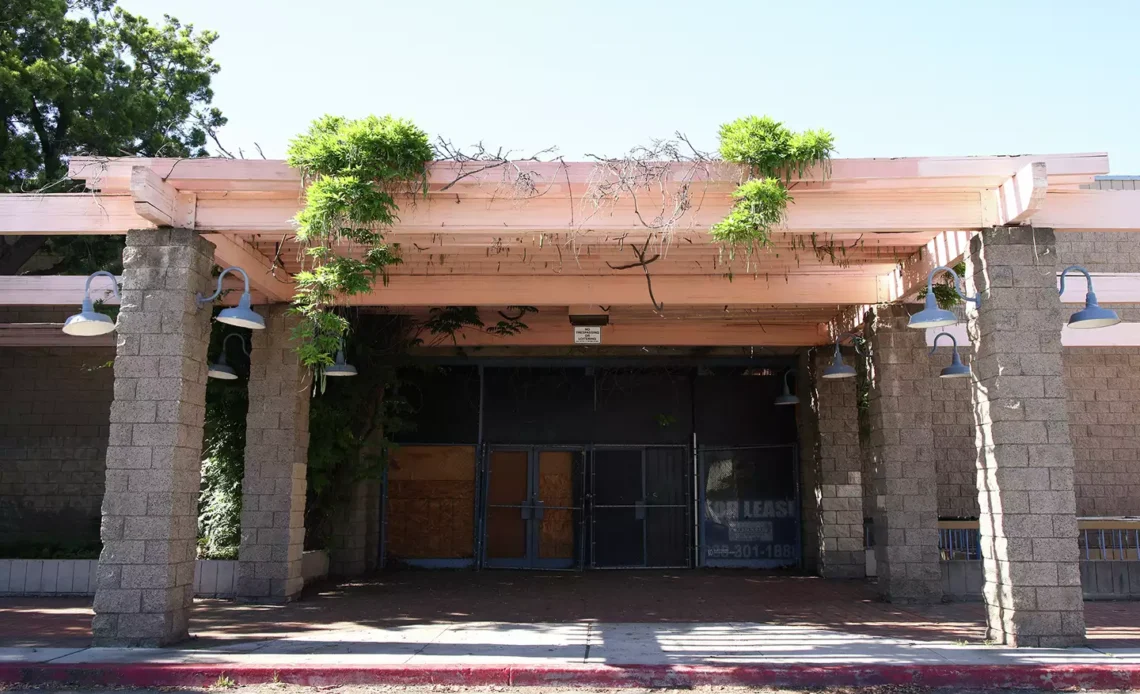Once a vibrant hub of shopping, dining, and social life, the abandoned mall in Inland Empire now sits as a crumbling reminder of past prosperity. Once teeming with life, this massive structure has become a ghost town, casting a long shadow over the surrounding community. Despite multiple attempts at revitalization, the property remains idle, symbolizing not just economic stagnation, but a deeper struggle with urban identity and redevelopment.
The Rise and Fall of the Inland Empire Mall
A Hub of Activity in Its Prime
The abandoned mall in Inland Empire wasn’t always an eyesore. When it first opened its doors in the 1980s, it was a regional destination. Shoppers flocked from across San Bernardino and Riverside counties to visit department stores like Sears, JCPenney, and Macy’s. It was more than just a mall—it was a gathering space, a job provider, and a symbol of a growing suburban landscape.
Families spent weekends browsing retail chains, dining in food courts, or attending movie nights. For decades, the mall played a central role in the cultural and economic life of the Inland Empire.
Decline and Closure
The mall’s downfall, however, was slow and painful. The rise of e-commerce, changes in consumer behavior, and newer competitors nearby contributed to its decline. Anchor stores began closing one by one, foot traffic plummeted, and small businesses fled.
By the mid-2010s, most of the stores had shuttered. Without renovation or rebranding, the mall quietly faded away, leaving behind a hollow shell that serves little purpose other than evoking memories of what once was.
Why the Abandoned Mall in Inland Empire Still Stands
Ownership Disputes and Legal Hurdles
One major reason the mall remains untouched is its tangled ownership. Over the years, the property has changed hands several times. Legal issues, outstanding liens, and zoning disputes have made redevelopment difficult. City officials and private developers have been locked in years of negotiation, often with no clear resolution.
Lack of Investment and Political Will
In addition to legal complexities, the mall has suffered from a lack of serious investment. Investors are wary of the high costs associated with tearing down or transforming such a massive property. On the government side, efforts to allocate redevelopment funds have often stalled amid budget concerns and shifting political priorities.
Some proposed projects—including converting the site into housing, mixed-use developments, or community spaces—have remained just that: proposals.
Impact on the Local Community
Economic and Social Effects
The economic consequences of the abandoned mall in Inland Empire are significant. Once a local employment engine and source of tax revenue, the mall’s closure has left a void. Nearby businesses have also suffered from decreased traffic, and property values in the surrounding area have seen a decline.
Aesthetic and Psychological Toll
Beyond the financial impact, the mall is a daily visual reminder of the decline. Boarded-up entrances, broken windows, and graffiti make it a magnet for crime and vandalism. Residents express frustration, describing it as an “eyesore” and a blight on the community’s image.
The psychological toll is real—what once represented hope and modernity now stands as a symbol of neglect.
Redevelopment Possibilities and Past Proposals
Previous Plans That Failed
Over the past decade, several ambitious redevelopment ideas have been floated. Proposals ranged from turning the site into an outlet mall, an entertainment district, or even a housing complex. Unfortunately, none of these plans gained the necessary traction or funding to proceed.
What a Revived Site Could Look Like
Despite past failures, there is still hope. Urban planners and community leaders envision a space that could be reborn—perhaps as a mixed-use development with affordable housing, green space, retail, and public services.
Other cities have successfully converted their dying malls into thriving community centers. Could the Inland Empire do the same?
What’s Next for the Abandoned Mall in Inland Empire?
Currently, the mall remains fenced off and inaccessible to the public, with no active redevelopment underway. Local officials continue to express interest in finding a solution, but tangible progress remains elusive.
Residents are growing weary. As time passes, the cost of restoring or reusing the site only grows. The fear is that if something isn’t done soon, the property may become permanently irredeemable.
Conclusion: A City’s Identity Tied to an Empty Shell
The abandoned mall in Inland Empire is more than a real estate problem—it’s a civic dilemma. It reflects the challenges many mid-sized American cities face as they transition away from outdated retail models. While it once represented growth, it now highlights the urgent need for innovation, collaboration, and action.
Whether it’s demolished, repurposed, or reborn, one thing is clear: the mall’s fate is tied to the future of the Inland Empire itself.


